Sony FE 35mm 1.4 versus 2.8
Marc Heijligers, 21-02-2016Sony currently has two full-frame 35mm lenses in its portfolio, a small compact 35mm F2.8 lens, and an impressive sized 35mm F1.4 lens. What are the differences?
Build Quality
The first lens, the Sony FE 35mm F2.8, is a compact and light-weight (120 grams) lens. In combination with a Sony A7 series camera, this creates a reasonable compact and light-weight combination (745gr with an A7RII). It is a bit heavier and bigger than for instance the Sony RX1R (507gr), but it still (just) fits in the same LowePro Apex 100 bag.The second lens, the Sony FE 35mm F1.4, is a large and heavy (680 grams) lens. In combination with the A7RII this adds up to 1255 grams, which compared to for instance a Nikon D800 plus Sigma ART 35mm F1.4 with a total weight of 1665 grams is not so much different (both will not be fun to carry for a whole day, with the D800 feeling more weight balanced than the Sony).
Underneath you see the difference in size of the 35mm lenses (left side and right side), compared to some other lenses in the Sony program. It shows the bulky size of the 35mm F1.4.
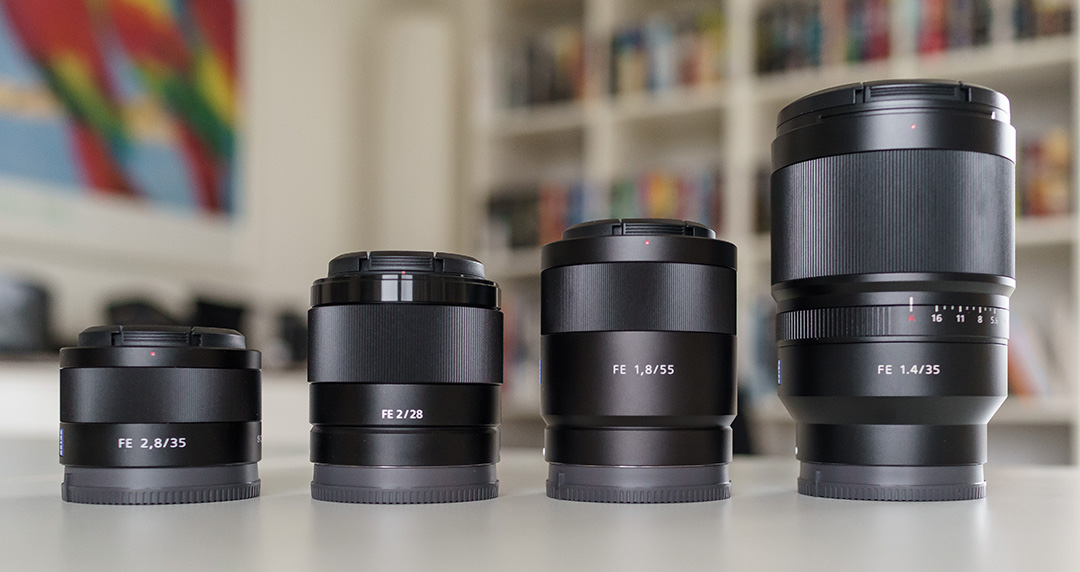
Optical Quality - Sharpness
According to the website SLRgear the F1.4 lens should give sharper results, as well as have a nicer rendering of out-of-focus areas than the F2.8 lens. The figures underneath give the field response for different lenses at f1.4, f2.8 and at f5.6.Sony FE 35mm F1.4:

Sony FE 35mm F2.8:

To evaluate the lenses under practical conditions, I have tested them with 2 scenes, where the main object is at various distances, one (bookshelf) is at 2m distance, and one (houses in a landscape) are at > 100m distance. For details, see the extensive sharpness comparison page.
The comparison shows that the Sony F2.8 lens is sharper of the two. This is not what I expected from the SLRgear curves above and its price. Both lenses suffer from a skewed lens element, which results in asymmetric sharpness (the F1.4 on the right side, the F2.8 on the left side), but the effect is more dramatic for the F1.4 lens. See the following example at the right side of the frame (the F1.4 lens on the left, the F2.8 lens on the right, both at f2.8):

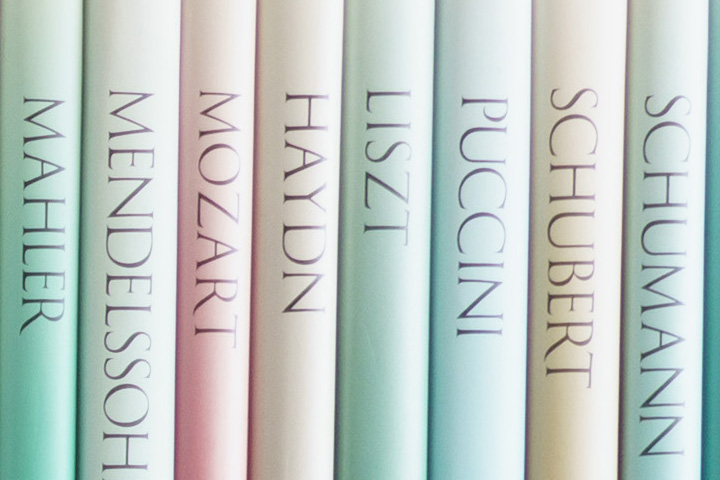
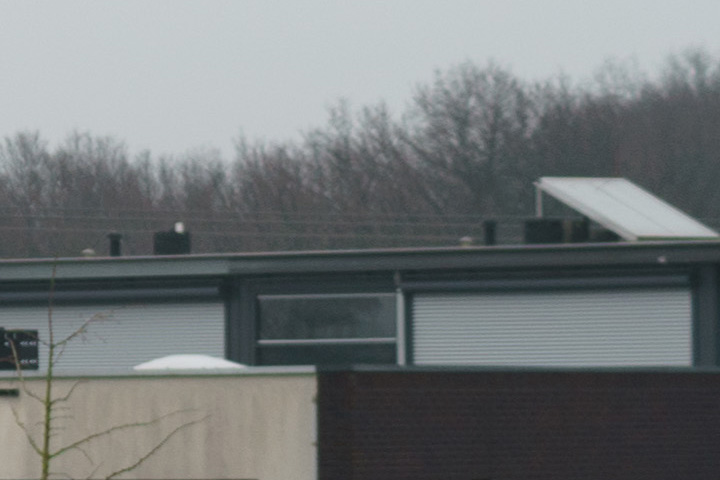

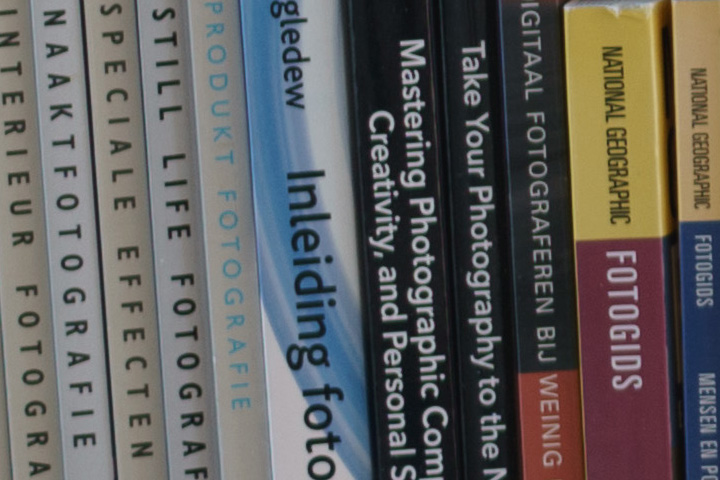
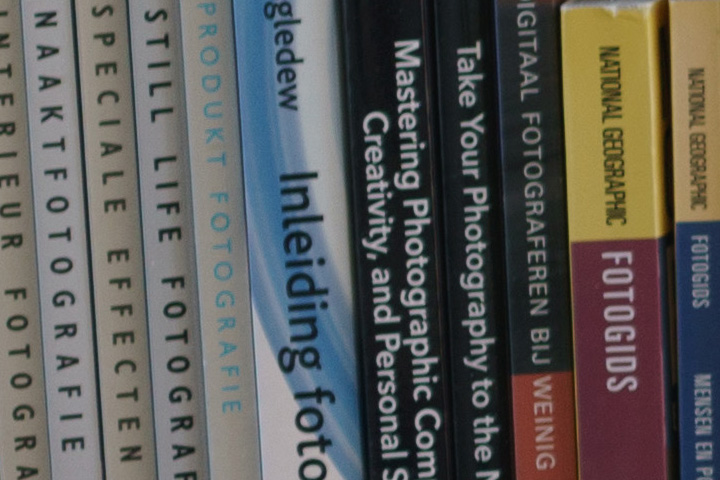
Optical Quality - Bokeh
When taking out-of-focus rendering into account, the Sony F1.4 lens renders smoother, especially when stopped down (see the example below with the F1.4 lens on the left at f1.4, and the F2.8 lens on the right at f2.8)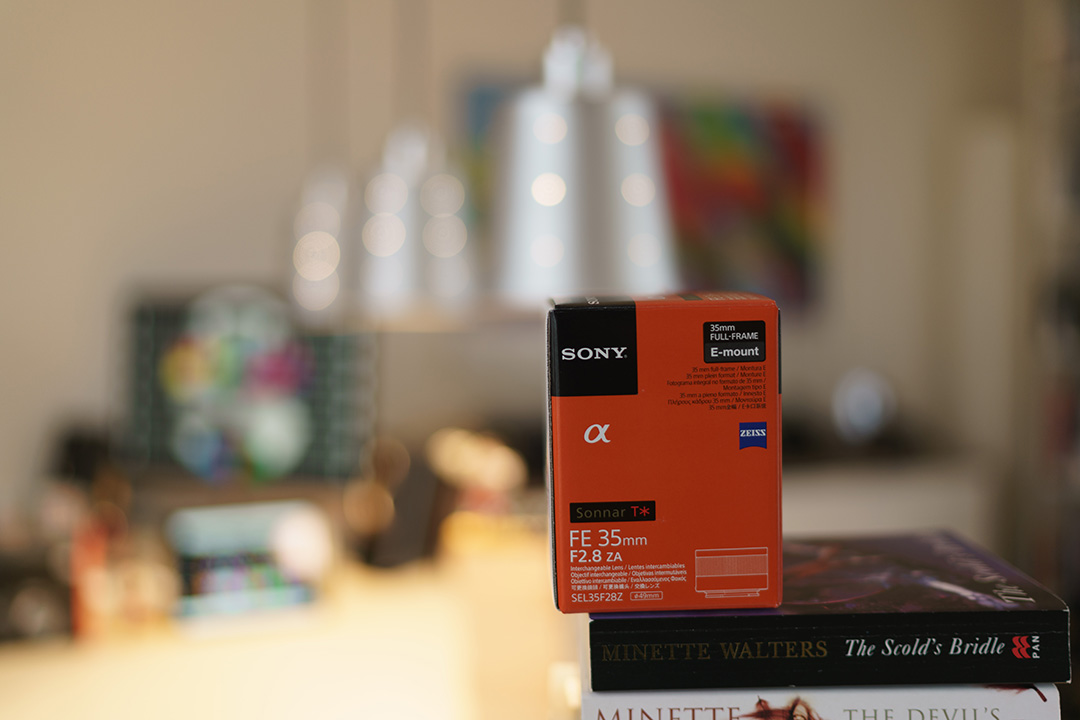
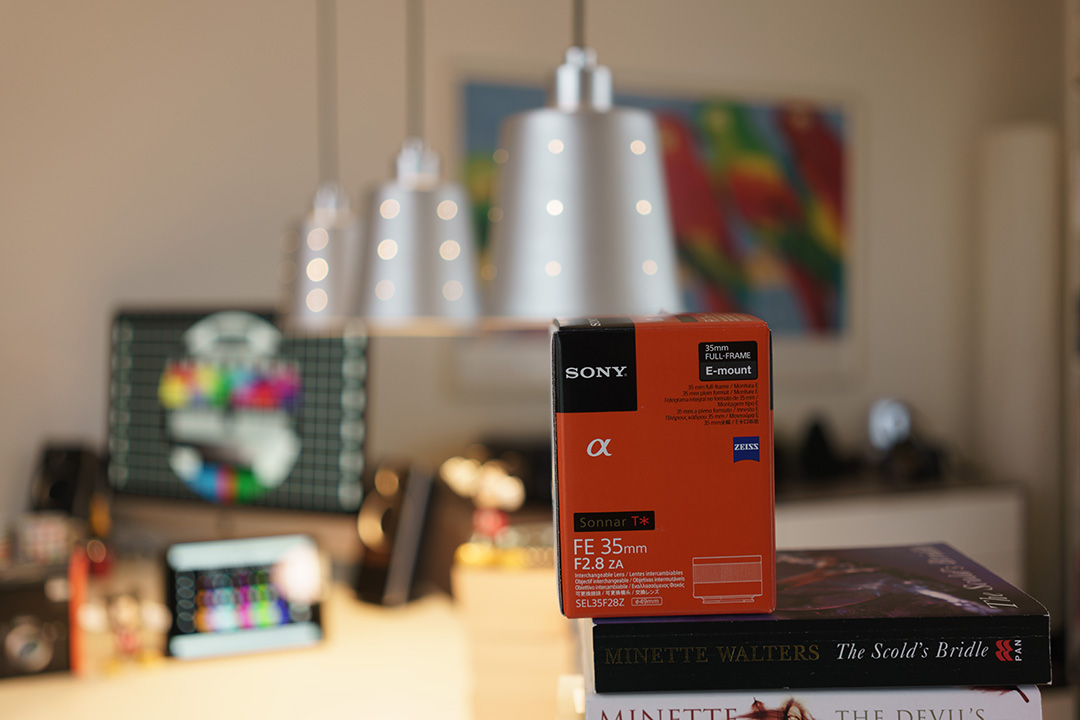

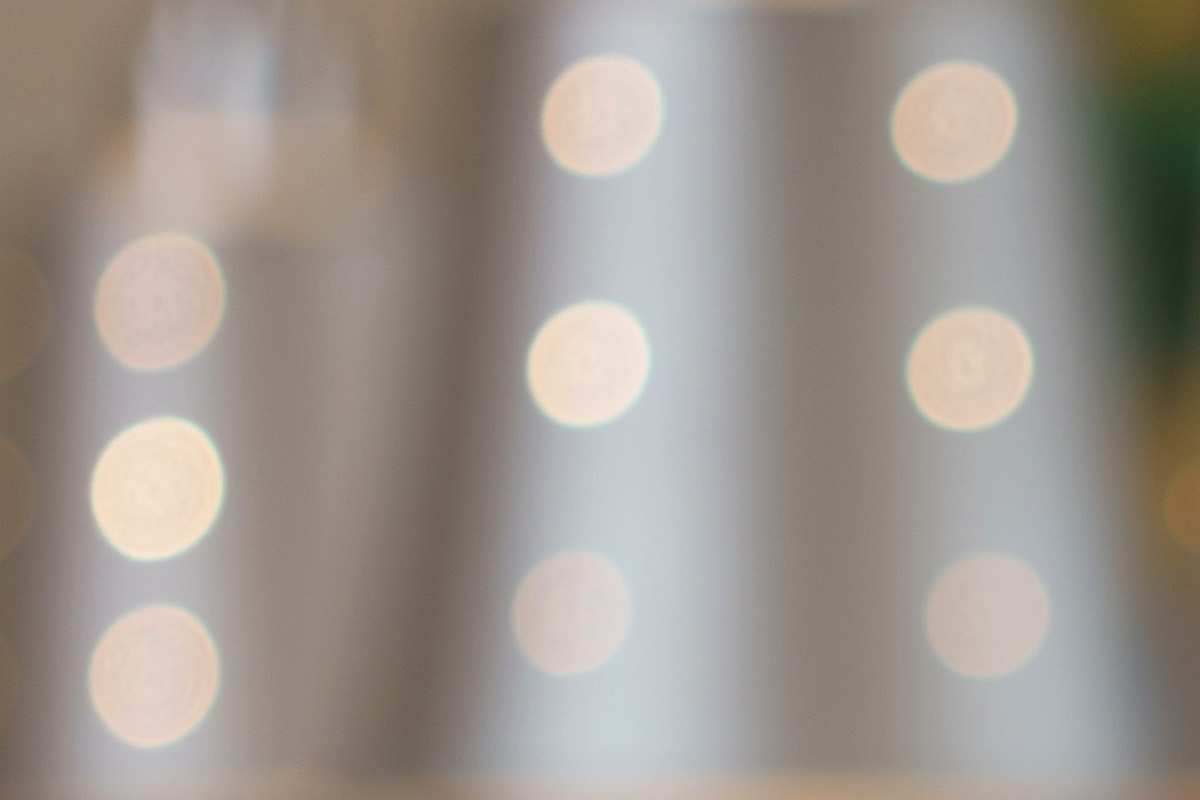
Alternatives
In the 35mm range, there are some alternative lenses:- Zeiss Loxia 35mm F2.0: A manual focus lens, I haven’t tested it myself. I hope to be able to test this lens in a later moment in time.
- Sigma ART 35mm F1.4: When combined with an adapter, it can be mounted on an A7RII. I have compared the Sigma to the Sony lens. The Sigma is a bit less sharp (on a Nikon D800 with less resolution), but has smoother bokeh for less than half the price. I would consider the Sigma to be the better lens for that reason. Below a crop with the Sigma at F1.4 on the left side, the Sony at F1.4 in the middle, and the Sony F2.8 on the right side, all with open apertures.
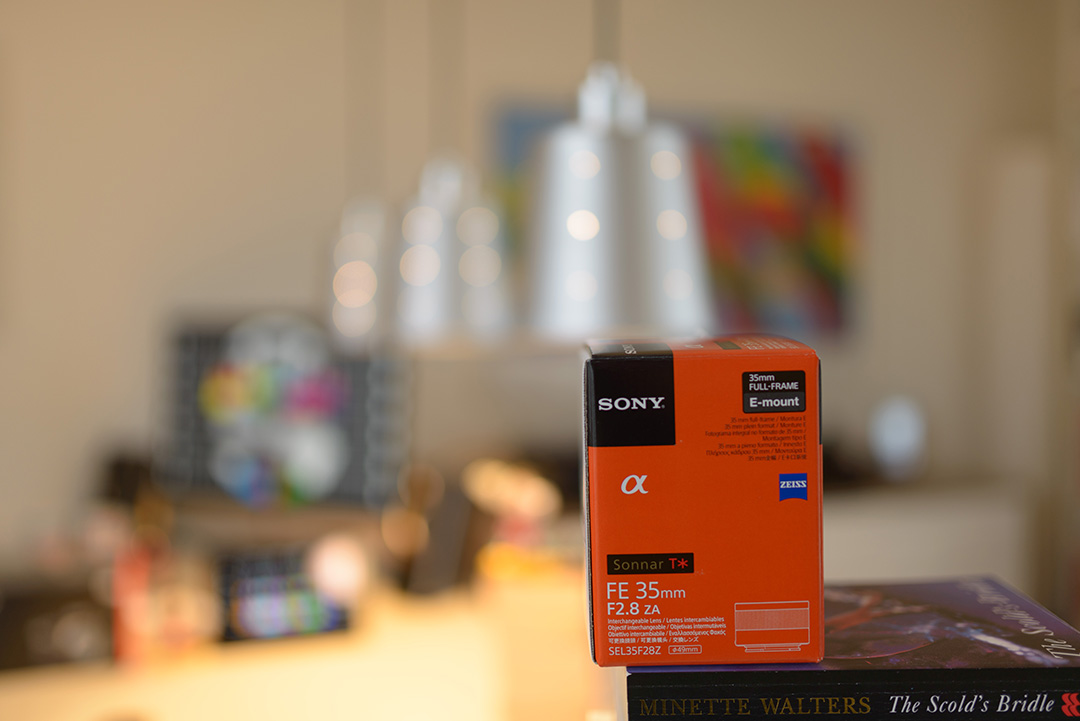

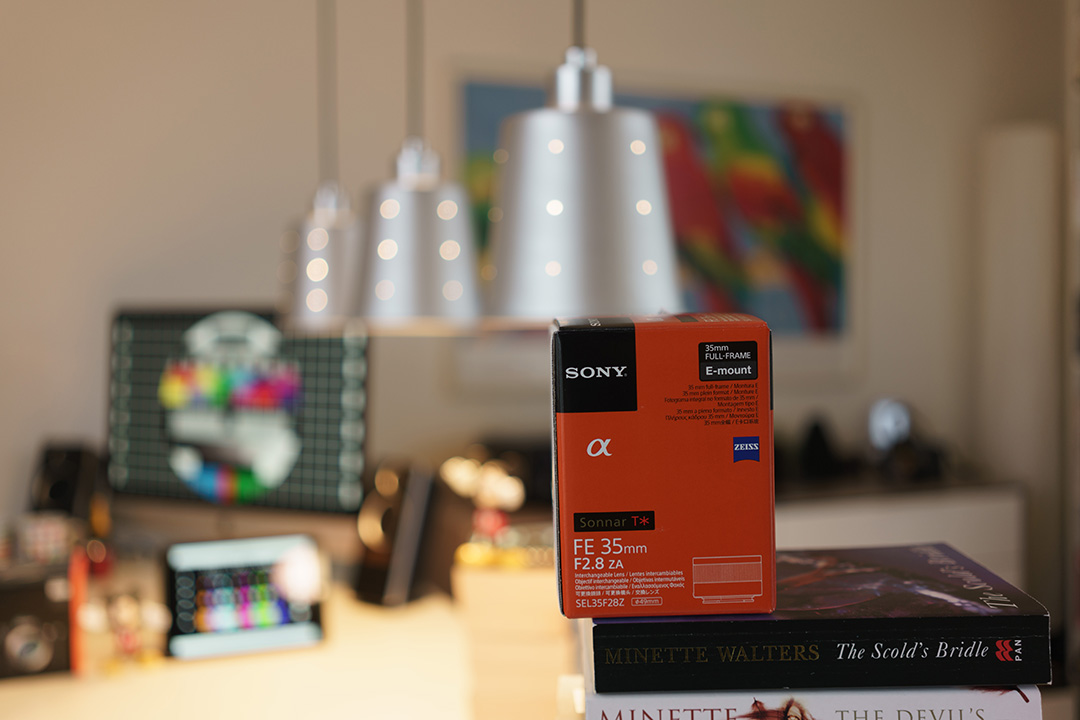
- Sony RX1R 35mm F2.0: The RX1R is a 35mm camera, which could be a viable alternative for people to consider. Although not as creamy as the F1.4, it comes pretty close in a pleasing buttery rendering, Disadvantage is that the camera has the option for only one lens. Below a crop with the Sony RX1R at f2.0 on the left side, the Sony at f1.4 in the middle, and the Sony f2.8 on the right side. As you can see, the F1.4 lens has the advantage.



- Sony FE 16-35mm F4.0: This zoom lens is bulky and heavy, and will certainly be less sharp and have less impressive out-of-focus rendering than the above lenses. Especially interesting when you want to go wider.
- Sony FE 55mm F1.8: Although this is not a 35mm lens, for quite some cases and some additional footsteps walking, this lens can be an alternative., e.g. if you want to take portraits with the shoulders and a bit of environmental background. The bokeh of the 55mm is much more smooth than the 35mm F1.4, and if bokeh is the main concern, you are probably better off with a standard or tele lens. Below you can see a crop with the 55mm at f1.8 on the left side (I couldn’t get further away, so the scene is a bit different), the Sony F.14 lens at f1.4 in the middle, and the Sony F2.8 lens at f2.8 on the right side. As you can see, the bokeh is most smooth on the 55mm.
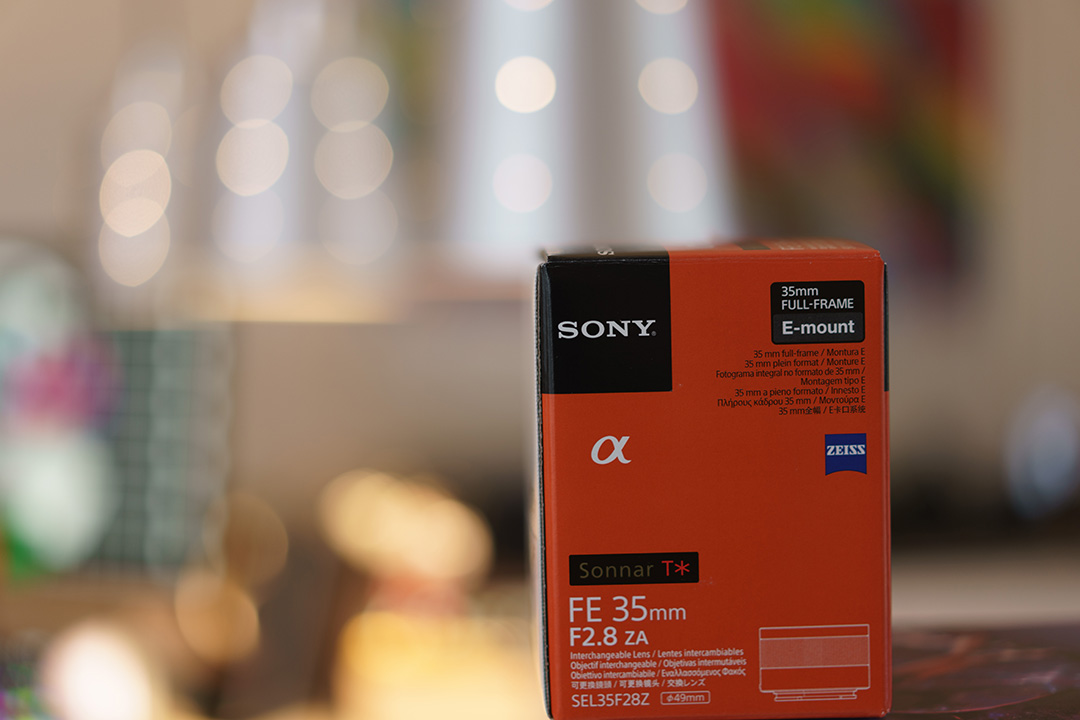


- Sony FE 28mm F2.0: Although this is also not a 35mm lens, one could consider the 28mm and crop afterwards to 35mm (or step closer by). As you can see in the 35mm/28mm comparison, the 28mm is similar in sharpness at higher aperture values, and has better bokeh than the 35mm (though also a bit busy inside the bokeh balls). Below a crop with the 28mm at f2.0 on the left side, the Sony at f1.4 in the middle, and the Sony f2.8 on the right side. As you can see, the bokeh is most smooth for the F1.4 lens, but the 28mm F2.0 comes already close to the RX1R, and is closer to the 35mm F1.4 lens than to the 35mm F2.8 lens in its overall appearance.
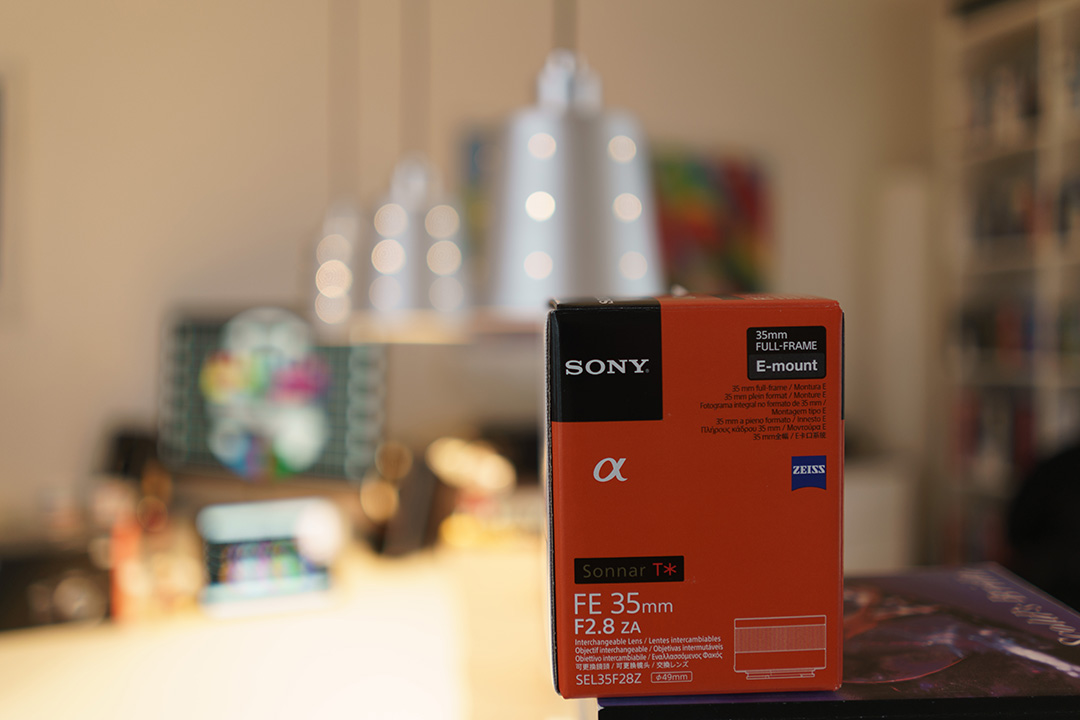


Links
There are some comparisons on the web where the 35mm F1.4 and 35mm F2.8 lens are compared directly, below are some links:- Steve Huff compares the F1.4, F2.8 and the Loxia.
- Amin Sabet compares the F1.4, F2.8 and the Loxia.